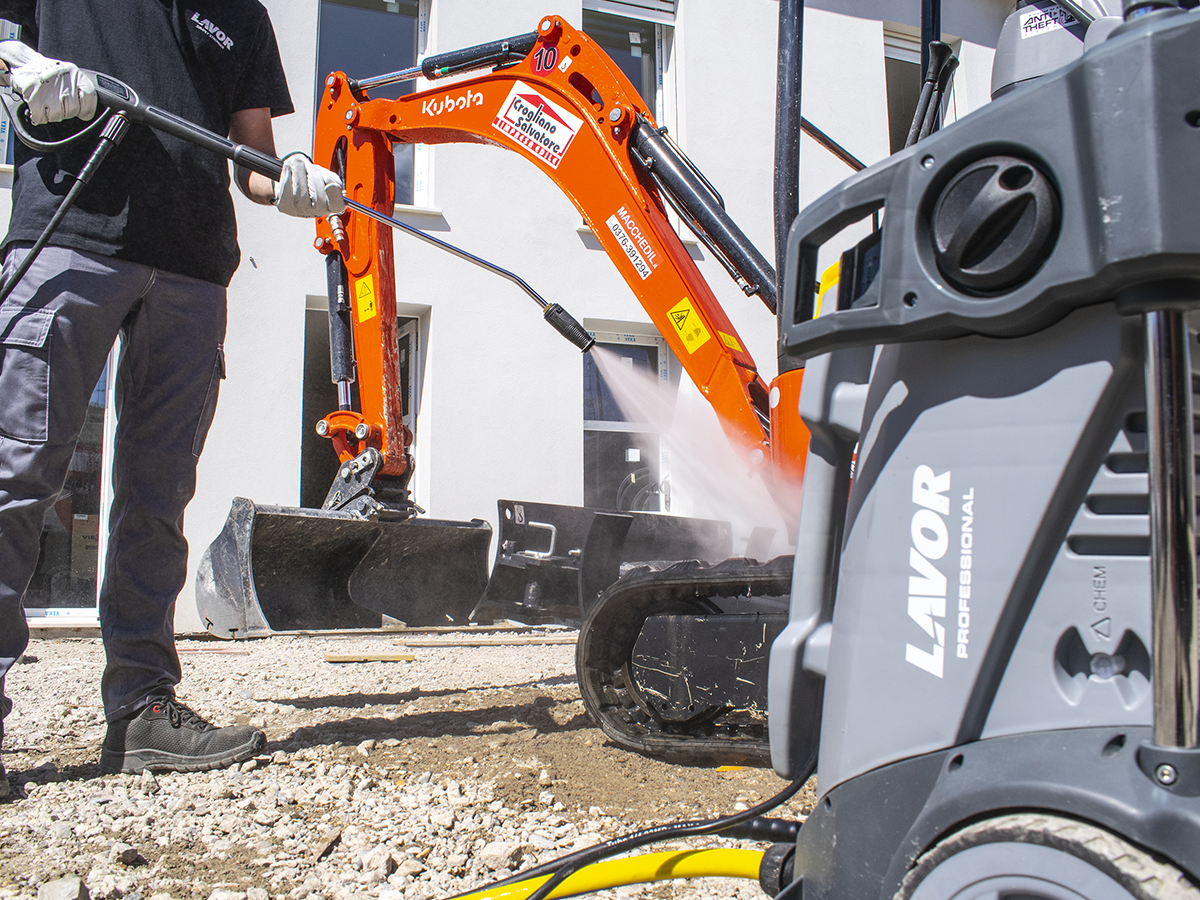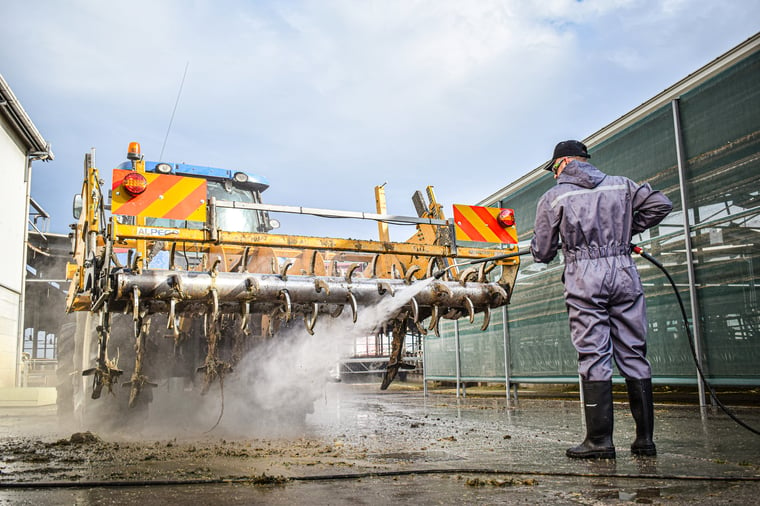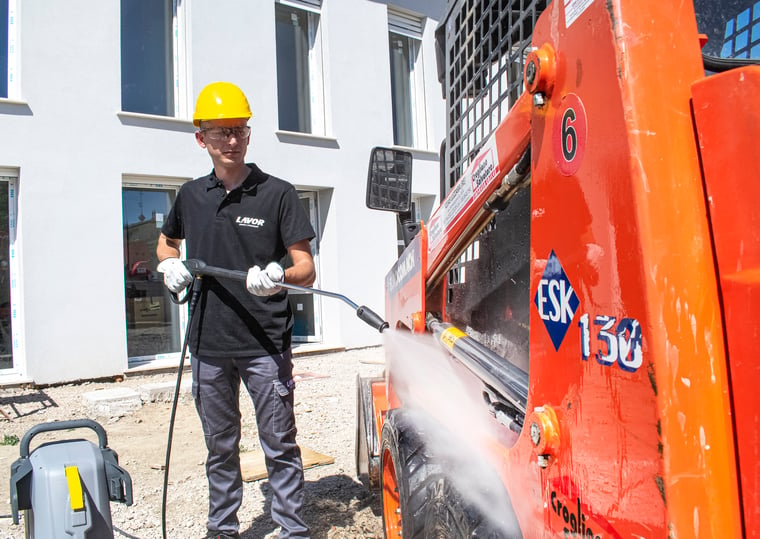How to solve the most common minor issues with high-pressure cleaners

To combat stubborn dirt on surfaces, machinery, vehicles and spaces, high-pressure cleaners are an excellent companion that guarantee thorough cleaning and saves time and effort. To consistently
ensure this high level of performance, however, careful routine maintenance is necessary. While in some cases the services of a specialist are unavoidable, in most situations a watchful eye and a few tips are sufficient to ensure that your high-pressure cleaner always delivers optimum results.
How to use a high-pressure cleaner correctly
When using a high-pressure cleaner for the first time, it is important to first read the instruction manual carefully, a digital copy of which Lavor makes available on its website. This makes it possible to become acquainted with the various operating indicator lights and actions to avoid so as not to compromise operation of the device. The instruction manual is an excellent means of understanding how to use a high-pressure cleaner correctly and to avoid unnecessary wasted time during start-up.
It is also essential to always comply with safety regulations and with a dash of common sense, to avoid the following:
- Using the high-pressure cleaner on persons or animals. Elevated water pressure and high temperatures (in the case of hot-water models) may cause injuries or burns;
- Using the high-pressure cleaner on electrically live parts, thus preventing the occurrence of short circuits or other accidents;
- Applying water jets onto particularly delicate surfaces, which might be damaged by the high pressures. In such cases, it is always advisable to first perform a test on a small, barely visible part;
- Using it if you are under the influence of medication, drugs or alcohol. Lack of clarity in such circumstances may result in injury to the user or damage to property or injury to persons in the vicinity;
- Allowing the product to be used by children or persons with reduced physical or mental capabilities which will guarantee their safety.
In addition to these tips on using high-pressure cleaners, depending on the model used, it is furthermore important to be aware of the following:
- In the case of high-pressure cleaners fitted with an electric motor, it is essential that they not be operated in the event of a damaged cable or abundant water leakage;
- Unsuitable fuels must not be used with petrol-engine high-pressure cleaners. It is likewise important to always use them outdoors or in well-ventilated rooms and to avoid breathing in the emitted fumes;
- With cold-water models, observe the maximum inlet temperatures indicated in the instruction manual, thereby preventing damage to parts or accessories;
- With hot-water models, care must be taken during use not to touch the boiler or other neighbouring parts that may reach high temperatures.
Carrying out routine maintenance of your high-pressure cleaner
Whether for frequent, seasonal or sporadic use, always carry out routine and specific maintenance on your high-pressure cleaner. This will ensure that any issues visible via the operating lights or external damage are always kept under control. Each time it is used, check the hose, pistol, filter, lances and cables to ensure they are undamaged and there is no leakage.
In the case of frequent use, carry out monthly maintenance, cleaning filters with detergent and limescale remover, the accessories that are used most often, and checking the oil level in the motor, for models with petrol engines.

In addition to a monthly inspection, a specialist technician should be called in, every 3 months or 200 hours of use, to check the hydraulic circuit, oil level, pump fastening and condition of filters and nozzles.
Every 6 months or 500 hours of use, however, a specialist technician should be consulted for the following:
- Monitoring of suction and delivery valve operation;
- Examination of the condition of the control valve;
- Replacement of pump oil, filters and nozzles.
What the most common issues are and how to solve them
Despite careful monitoring and routine maintenance, malfunctions or issues may sometimes arise which, in most cases, can be resolved without requiring specialist outside support.
The most common hydro-pressure cleaner issues that can occur are listed below:
- The pressure washer does not start. In most cases, this malfunction can be traced back to the plug or electrical outlet to which it is connected;
- The high-pressure cleaner produces excessive levels of noise. This problem may be attributable to a number of factors, such as a clogged water inlet filter, an obstruction inside the ventilation circuit that does not allow air to pass through it, or inadequate water supply, caused by the internal tap not being properly open or shut off. It is therefore essential to check all three of these scenarios and, if necessary, to carry out routine maintenance;
- The high-pressure cleaner shuts down unexpectedly. This might be a motor fault. Follow the intervention instructions outlined in the instruction manual;
- The motor makes an unusual buzzing sound. Here too, we recommend that you consult the instruction manual. The issue could be connected to an extension cord or unsuitable power socket;
- The water in the high-pressure cleaner is not hot (in models where this feature is available). Check that the filter has been properly cleaned. If the issue persists, check the boiler safety thermostat after the pressure washer has cooled;
- The high-pressure cleaner does not draw sufficient quantities of detergent (in models with a detergent tank). Check that the knob is fully open and that the nozzle head is correctly positioned. Clean out any blockages from the filter and avoid using detergents that are too viscous;
- No water leaves the high-pressure cleaner nozzle. Check that the tap is fully open and that nothing obstructs the flow of water. Check the nozzle and, in the event of obstruction or damage, clean or replace. Very often, inlet water contains impurities that clog the water inlet filter, preventing it from flowing through freely and, consequently, not supplying the pump correctly.

Another common issue with high-pressure cleaners is low water jet pressure. In this case, we recommend checking the following:
- the pressure regulator is not set too low;
- the nozzle is positioned correctly to facilitate the flow of water;
- the nozzle is not clogged or damaged. In these cases, cleaning or replacement is required;
- the tap is fully open and the water flow rate is as indicated in the manual.
With routine maintenance and by following the instructions in the manual, your high-pressure cleaner will ensure that it will always be efficient and a reliable ally in your cleaning efforts, even those that are the harshest and the most demanding.

-1.jpg)
-1.jpg)